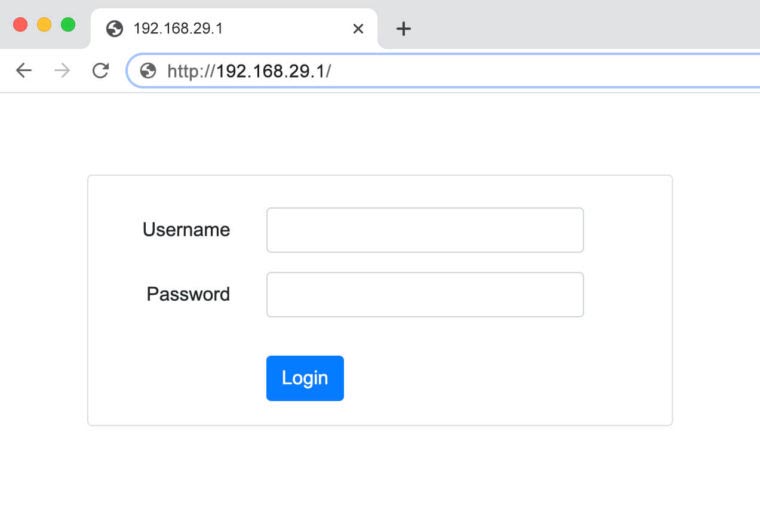192.168.29.1 is a private IPv4 address commonly used as the default gateway for accessing router administration panels. This address serves as the portal to your network’s control center, allowing you to configure wireless settings, implement security measures, and troubleshoot connectivity issues. Unlike public IP addresses that connect you to the internet, 192.168.29.1 operates exclusively within your local network environment.
How to Login to 192.168.29.1?
Accessing your router’s administration interface through 192.168.29.1 requires a few straightforward steps:
- Connect your device to the router network either via WiFi or Ethernet cable
- Open any web browser (Chrome, Firefox, Safari, or Edge)
- Type “http://192.168.29.1” in the address bar and press Enter

- When prompted, enter your login credentials
- You’ll now have access to the router’s management dashboard
For most routers using this gateway address, the default login credentials consist of “admin” for both username and password. However, manufacturers occasionally implement different combinations for security purposes. Check your router’s documentation or look for a label on the device itself for the specific login information.
How to find your Router’s default IP address?
If you’re unsure whether 192.168.29.1 is the correct gateway address for your router, you can identify the default IP through several methods:
Windows Operating System
- Press Win+R to open the Run dialog
- Type “cmd” and press Enter to open Command Prompt
- In the Command Prompt window, type “ipconfig” and press Enter
- Look for the “Default Gateway” entry – this is your router’s IP address
macOS
- Click the Apple menu and select System Preferences
- Choose Network and select your active connection
- Click Advanced and select the TCP/IP tab
- The Router address listed is your default gateway
Linux
- Open Terminal
- Type “ip route | grep default” and press Enter
- The IP address following “default via” is your router’s gateway address
Mobile Devices
For smartphones and tablets, navigate to WiFi settings, tap on your connected network, and look for gateway or router information in the network details.
Change WiFi Settings
After successfully logging into the 192.168.29.1 administration panel, you can customize your network configuration according to your preferences:
Changing Your Network Name (SSID)
- Navigate to the Wireless section of your router’s interface
- Locate the SSID field (may be under “Basic Settings”)
- Enter your preferred network name
- Apply changes and allow your router to update
Selecting a unique SSID helps distinguish your network from others nearby and can reflect your personal branding. Avoid including sensitive information in your network name as it’s publicly visible to anyone within range.
Securing Your Wireless Network
- Access the Wireless Security settings
- Select WPA2-PSK or WPA3 encryption (avoid older WEP protocols)
- Create a strong password with mixed character types
- Save your configuration
Implementing robust encryption with a strong password significantly reduces the risk of unauthorized access to your network. Consider updating your password periodically for enhanced security.
Advanced Configuration Options
The 192.168.29.1 admin interface typically provides access to additional network management features:
- QoS (Quality of Service) settings to prioritize specific traffic types
- Parental controls for content filtering and access scheduling
- Port forwarding for hosting services and applications
- Firewall configuration to protect against external threats
- Guest network setup for temporary visitor access
These advanced settings allow for precise control over your network environment, balancing performance, accessibility, and security according to your specific requirements.
Network Security Best Practices
When managing your router through 192.168.29.1, implement these security measures:
- Change default administrator credentials immediately
- Update firmware regularly to patch security vulnerabilities
- Disable remote management unless absolutely necessary
- Enable automatic disconnection for inactive devices
- Consider MAC address filtering for additional access control
By establishing proper security protocols, you create a resilient network environment that protects your data while maintaining reliable connectivity for authorized devices.
Understanding how to properly access and configure your router through 192.168.29.1 forms the foundation of effective network management, ensuring optimal performance and security for all connected devices.
